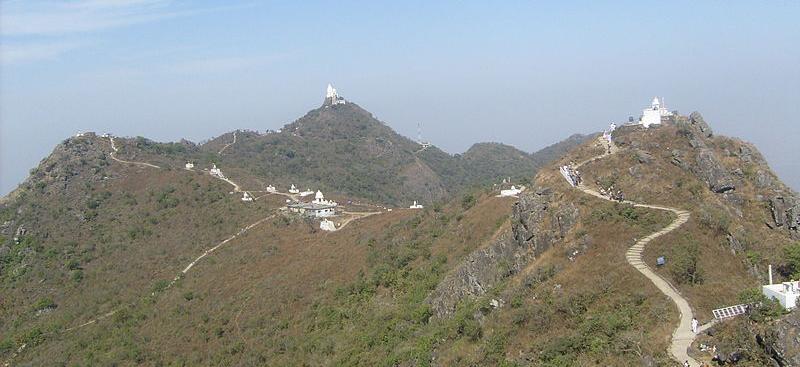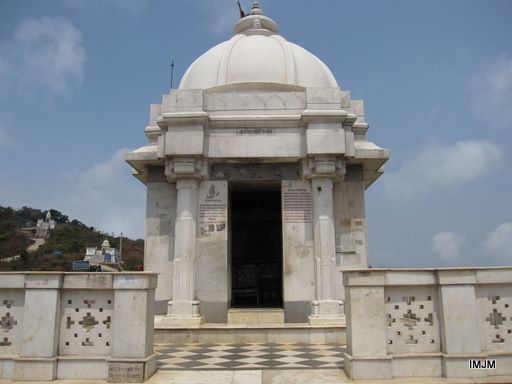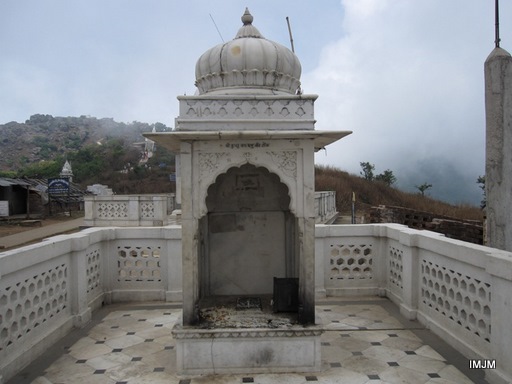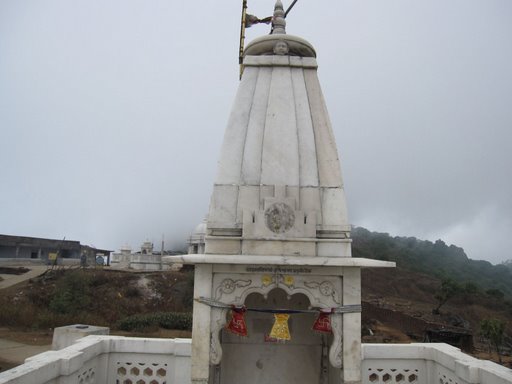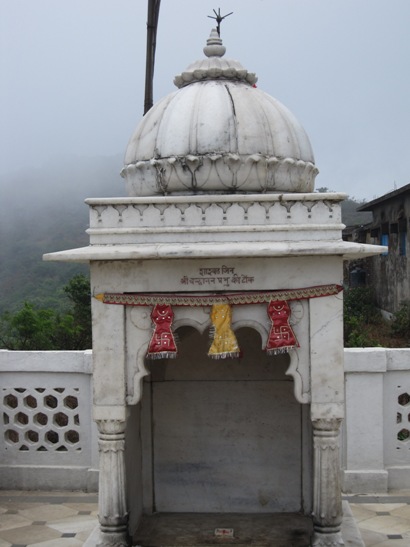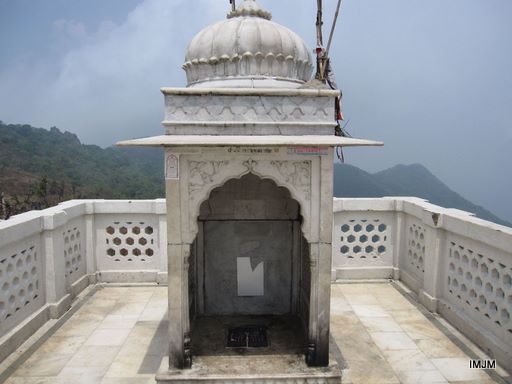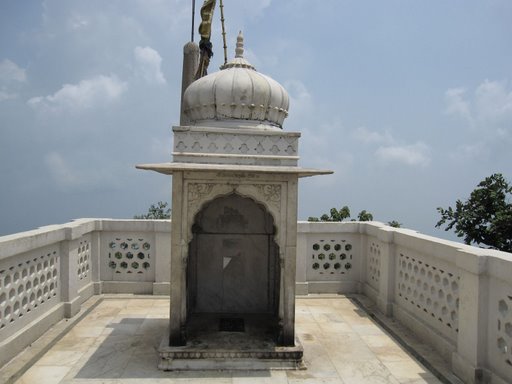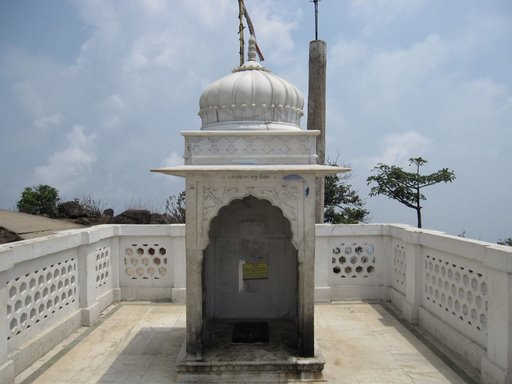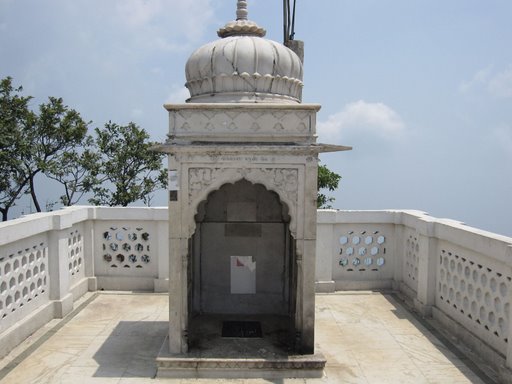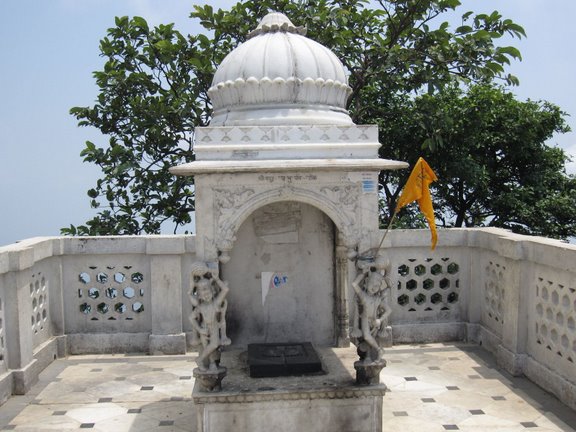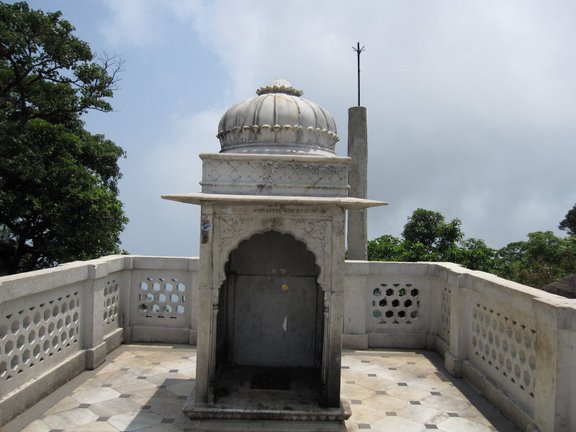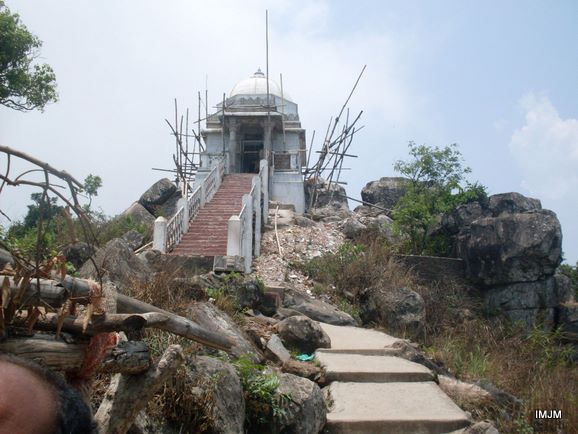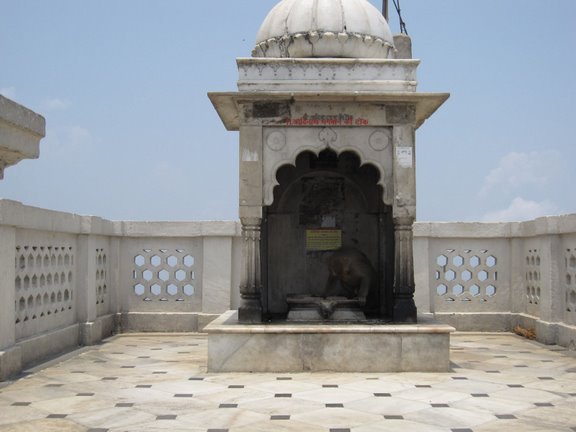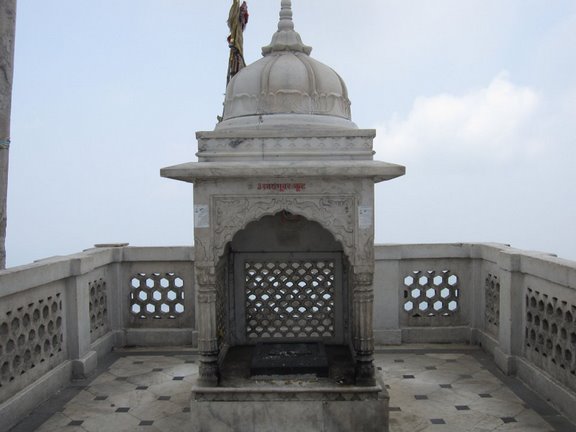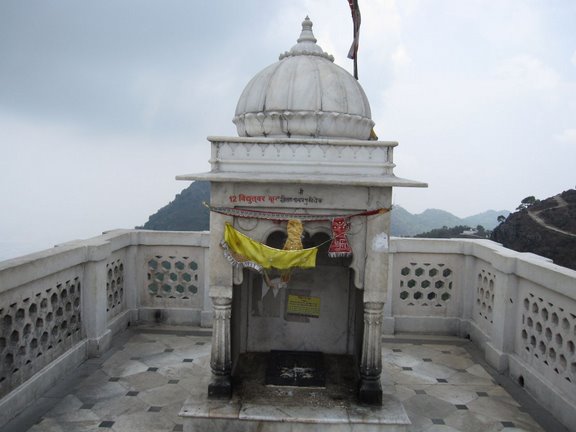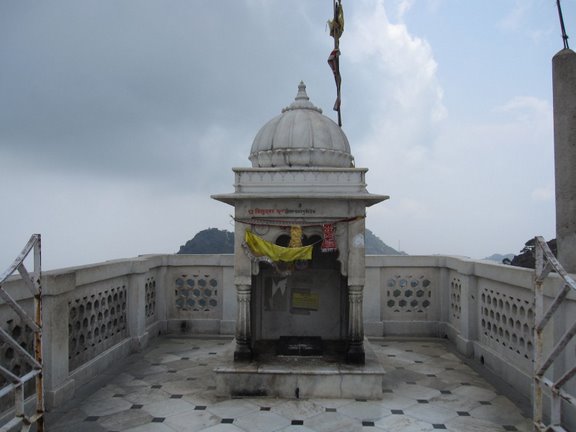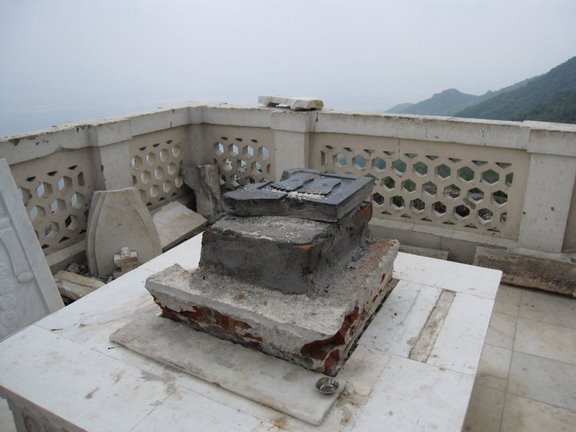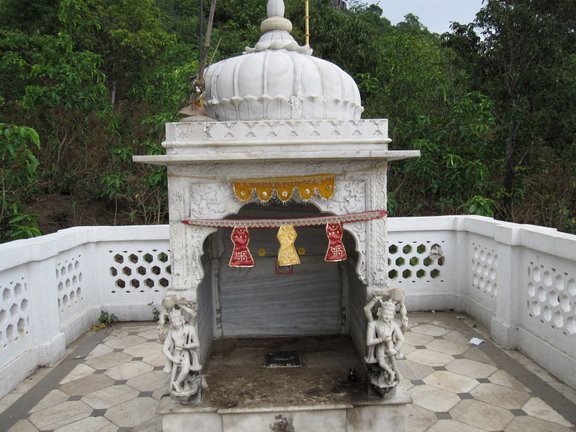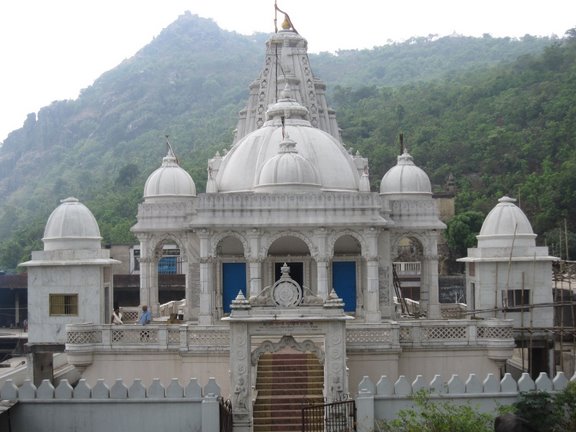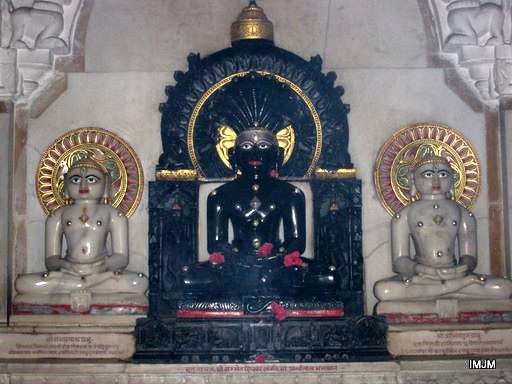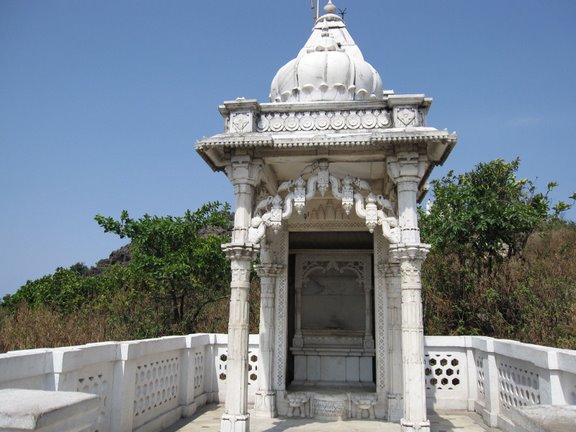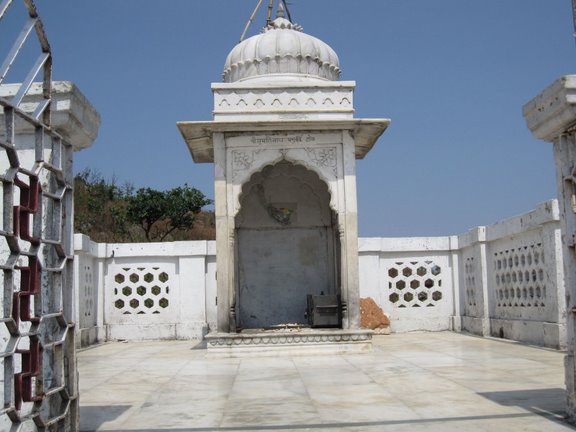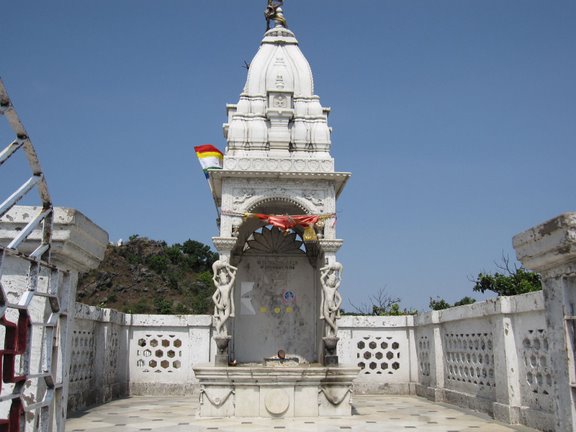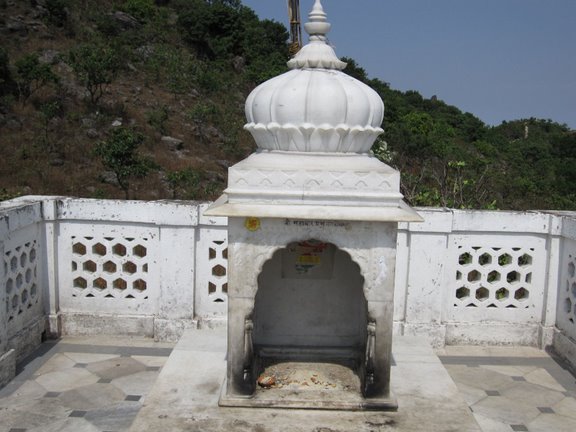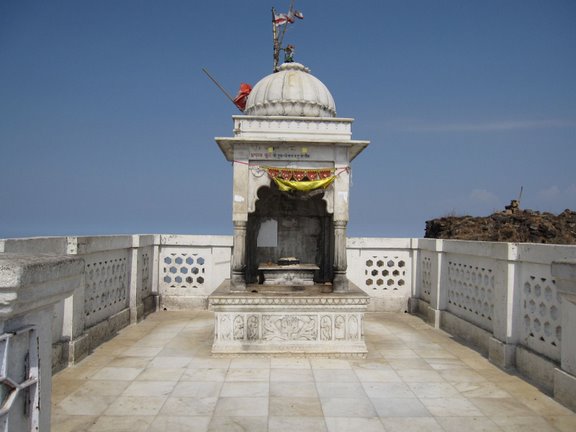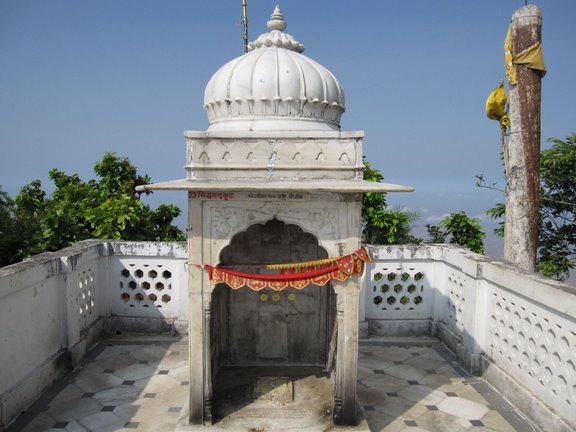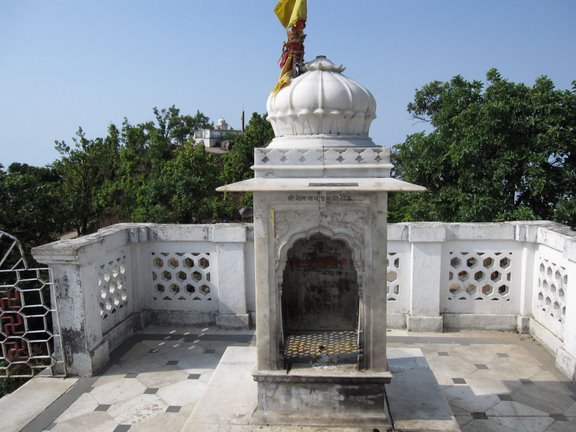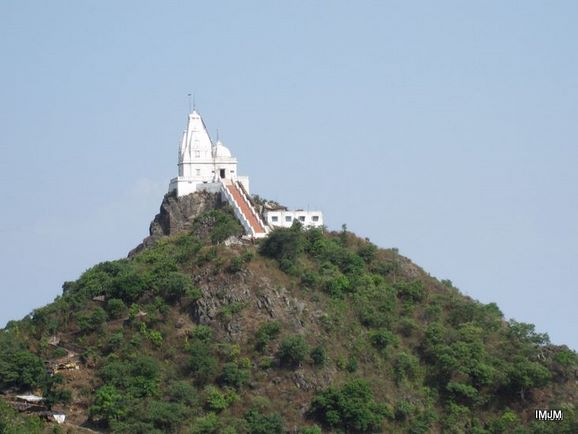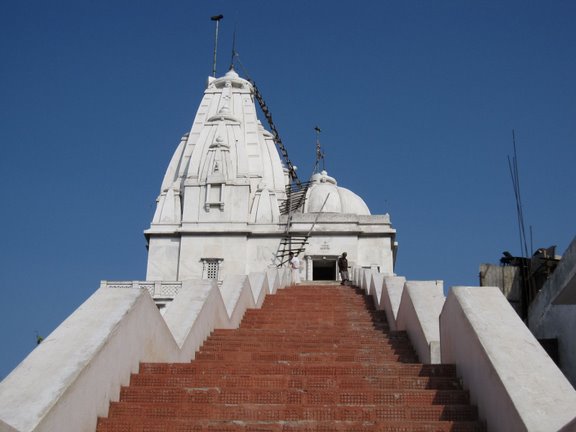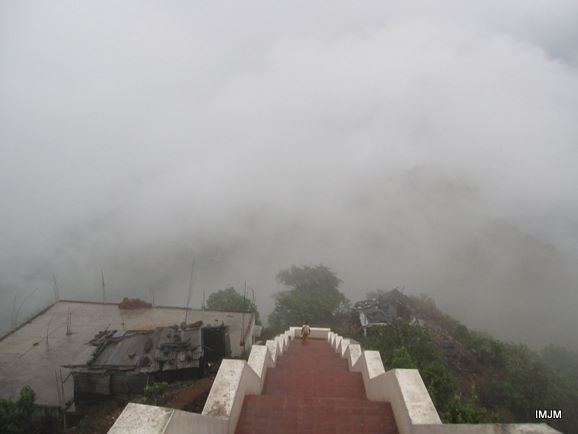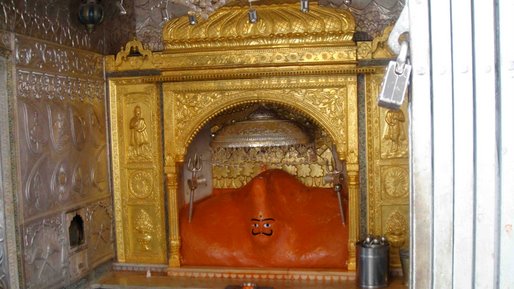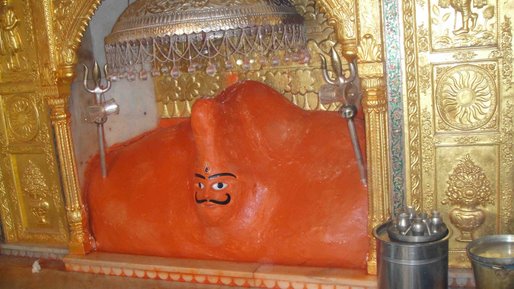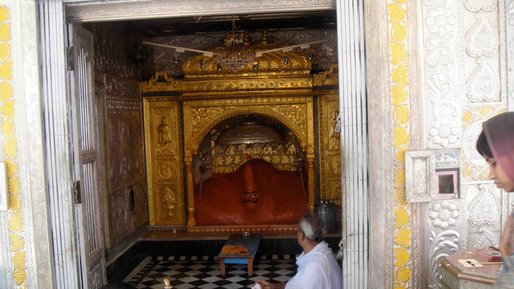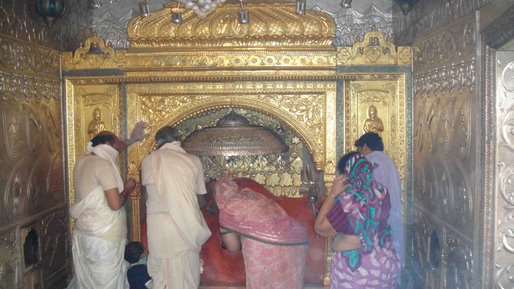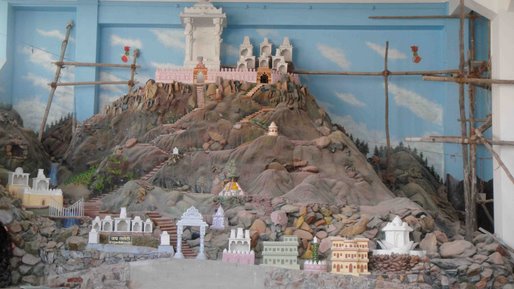The Thirty Tonks of Shri Shikharji
1. About Shri Shikharji
Shri Shikharji is one of the holiest of all Jain teerths. Twenty of the 24 Tirthankars of the current avasarpini, and countless other siddhas, attained moksa here. It is situated on a group of eight hills called the Parasnath Hills in Giridih, Jharkhand.
In his book Mahopadhyaya Lalitprabh Sagar ji (Jain Pilgrimages. Reverence and Art, Prakrit Bharti Academy, Jit-Yasha Foundation, Jaipur 2000) describes Shikharji as follows:
"When just one auspicious event of one Tirthankar can convert a place into a pilgrimage, it will be quite impossible for human intelligence to assess the holiness and power of that pilgrimage where as many as twenty Tirthankars have lit-up the inextinguishable light of nirvana. Although the first light of nirvana was lit-up in Ashtapad (in the Himalayas), today that pilgrimage is invisible to us. Under such a circumstance, Sammet Shikhar is that pilgrimage which we can hail as the "Shikhar" (Summit) of the first light of nirvana."
Muniji goes on to explain:
"The truth is that Sammet Shikhar is the top-most light of nirvana. Of the twenty-four Tirthankars of Jainism, twenty Tirthankars (namely Ajitnath, Sambhavnath, Abhinandan prabhu, Sumatinath, Padmaprabha, Suparshvanath, Chandraprabhu, Suvidhinath, Sheetalnath, Shreyansnath, Vimalnath, Anantnath, Dharmnath, Shantinath, Kunthunath, Arnath, Mallinath, Munisuvrat Swami, Neminath and Parshvanath) spent the evening of their lives on this great mountain and attained the supreme status of moksha. Every Tirthankar made efforts to enliven the density of power of this place, and consequently for millenniums, this place has been vibrant, awakened and anointed with their halo. Really, Sammet Shikhar is an astonishing, unique and awakened holy pilgrimage. Even today, the atmosphere of Sammet Shikhar contains a sort of holiness."
Shri Shikharji's Tonks extend for about 2 miles horizontally, from eastern end to the western. The total foot distance on the hilltop to cover all the 30 Tonks and Jal Mandir is about 4.5 miles. All 30 Tonks have charan replicas (no idols). No daily puja pakshal or aarti is done at the tonks. It is, however, done at the Parasnath Tonk and Jal Mandir.
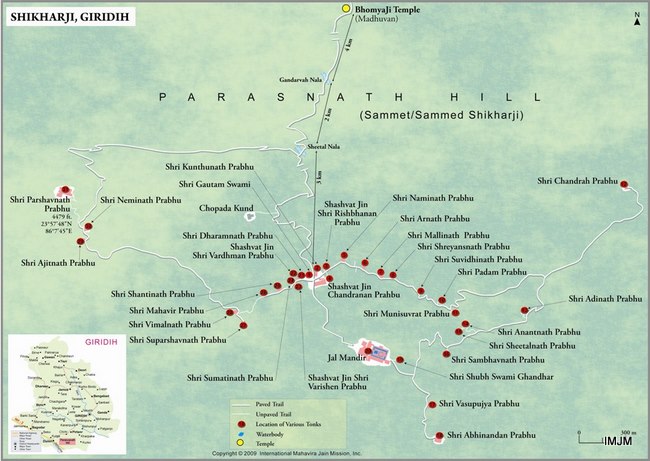
2. The Tonks
"Tonk" is the English translation of the original term used to address the marble structure marking the supposed spot where a siddha attained moksha, or where a devotee established a spot for meditation in homage to a siddha. In some Jain literature, Tonk is defined as a peak with a temple. All signs at Shri Shikharji refer to this term. The structure is also referred to as Toonk, Dehri, Kut, Koot in various Jain communities and dialects. In some Jain Literature, a Dehri is defined as a small temple with prominent threshold.
Teerthraj Shikharji has 30 Tonks, in addition to the Jal Mandir. These are:
- 4 Shashvat Tirthankars:
- Shri Rishabhnan Prabhu
- Shri Chandranan Prabhu
- Shri Vardhman Prabhu
- Shri Varishen Prabhu
- Shri Rishabhnan Prabhu
- 24 Tirthankars of current avasparni
- 2 Ganadhar:
- Shri Gautam Swami (Mahavir Swami's Ganadhar)
- Shri Shubh Swami (Parasnath Swami's Ganadhar)
- Shri Gautam Swami (Mahavir Swami's Ganadhar)
Sammed and Sammet is used interchangeably by various Jain communities. The difference is primarliy due to the form of Prakrit language used by Shwetambar and Digambar Jains. In the Shwetambar tradition Ardha Magadhi Prakrit is used, whereas in Digambar traditon Saurseni Prakrit is used. In Saurseni dialect, 't' becomes 'd' in use. That is why its pronounced 'Sammet' in Shwetambar tradition and as 'Sammed' in Digambar tradition.
4. Veer and Vikram Samvat
Veer and Vikram Samvat calendar-years are commonly used in various Jain literature and actual Tonk engravings in reference to the timeline of Shikharji Tonk dedication. Veer Samvat is mostly used by Jains (and Siddhachalam) in accordance with the nirvana of 24 Tirthanakar, Bhagwan Mahavir Swami. Current year + 527 is the Veer Samvat year (starting on Diwali). Also, current Year + 57 is Vikram Samvat year in accordance with the calendar established by Indian emperor Vikramaditya.
5. The Pilgrimage
Shikahrji Tonks are situated on Parasnath Hills in the eastern Indian state of Jharkhand. The Tonks are spread on the hill top from east to west, for about 4 km of horizontal distance. Various Tonks are situated on different peaks of the hill, hence the total foot distance on the hill top to see all the 31 Tonks is about 9km.
Shikharji main entrance starts from the north side of the hill in Madhuban. The main paved foot trail from Madhuban leads up to Tonk No.1, which is at the center of all Tonks. Tonks Nos. 2-20 are east of Tonk No. 1 and Tonks Nos. 21-31 are west of Tonk No. 1. Tonk No. 12 is farthest to the east, while Tonk No. 31 is the west most Tonk. The most common path to see all the Tonks is to start the pilgrimage from Tonk No. 1, walk eastwards towards Tonk No. 12 and then walk west towards Tonk No. 20, which is Jal Mandir. From Jal Mandir the devotees walk up to Tonk No. 1 intersection and then westwards towards Tonk No. 31. From the 31st Tonk, pilgrims will usually return via the Dak Bunglow trail, which meets the main trail at Sheetal Nala.
Although there are Tonks of all 24 Tirthankars at Sammed Shikhar, only 20 of them attained Nirvana on these sacred Hills. Four Tirthankars who did not attain Nirvana here are:
- 1st Tirthankar Shri Adinath Prabhu,
- 12th Tirthankar Shri Vasupujya Prabhu,
- 22nd Tirthankar Shri Neminath and
- 24th Tirthankar Shri Mahavir Prabhu.
Even though the history of Tonks go back many hundred years, the current Tonks of the 20 Tirthankars who attained Nirvana here were dedicated in Veer Samvat 2295 (Vikram Samvat 1825 or 1768 CE). Tonks of 4 other Tirthankars, along with Shashwatjins Rishabnanan, Chandranan, Varisen, Vardhman et al. were dedicated in Veer Samvat 2395-2403 (Vikram Samvat 1925-1933 or 1868-1875 CE).
Description of the Tonks
1. Shri Gautam Swami (Ganadhara)
Tonk No. 1 is that of Ganadhara Gautam Swami. It stands majestically with a large dome at the center of all Tonks. It is on the main intersection where 4 trailways meet. This Tonk faces east and is approached from the main paved trail from Madhuban.
Ganadhar Gautam Swami was first and chief disciple of Bhagwan Mahavir Swami. In fact, Gautam was his last name, because he belonged to the Gautam gotra. His first name was Indrabhuti, but he is popularly known as Gautam Swami.
Images of charan replicas of twenty-four Tirthankars and ten Ganadharas are installed in white marble in the main section of the Tonk whereas charan replicas of Gautam Swami are dedicated in black marble outside the main section, to the left. As per the engravings on the Tonk it was dedicated in Veer Samvat 2487 (Vikram Samvat 2017 or 1960 CE).
2. Shri Kunthunath Prabhu (17th Tirthankar)
A few steps away from Tonk No. 1, walking towards east, stands Tonk No. 2 of 17th Tirthankar Shri Kunthunath. It was dedicated in Veer Samvat 2295 and has charan replicas of Shri Kunthunath Prabhu in black marble. This Tonk faces east.
3. Shashvat Jin Shri Rishbhanan Prabhu
Tonk No. 3 is about 100 yards from Tonk No. 2 proceeding eastwards. It was dedicated during Veer Samvat 2395-2403 and has charan replicas of Shashvit Jin Rishbanan Prabhu, in black marble and is relatively smaller in size than those of Tirthankars. This Tonk has a long conical dome with a face image at the top. This Tonk faces east.
4. Shashvat Jin Chandranan Prahbu
Opposite Tonk No. 3 on the other side of the trail is Tonk No. 4 of Shashvat Jin Chandranan Prahbu. It was dedicated during Veer Samvat 2395-2403 and has charan replicas of Bhagwan in white marble, and is relatively smaller in size than Tirthankars. This Tonk faces east.
5. Shri Naminath Prabhu (21st Tirthankar)
Walking another 150 yards on a slight uphill is Tonk No 5 of 21st Tirthankar Shri Naminath Prabhu. The charan replicas of Shri Naminath Prabhu are dedicated in black marble. This Tonk faces south.
6. Shri Arnath Prahbu (18th Tirthankar)
Walking further uphill towards east is Tonk No. 6 of 18th Tirthankar Shri Arnath Prabhu. The charan replicas, in black marble were dedicated here in Veer Samvat 2295. This Tonk faces south. From here on, the trail gets higher with steps.
7. Shri Mallinath Prabhu (19th Tirthankar)
Tonk No. 7 is of 19th Tirthankar Shri Mallinath Prabhu. Here the holy charan replicas, in black marble, were dedicated in Veer Samvat 2295. This Tonk faces south.
8. Shri Shreyansnath Prabhu (11th Tirthankar)
Tonk No. 8 is of 11th Tirthankar Shri Shreyansnath Prabhu. The holy charan replicas of Bhagwan Shreyansnath, in black marble were dedicated in Veer Samvat 2295. This Tonk faces south and is about 100 yards from Tonk No. 7.
9. Shri Suvidhinath Prabhu (9th Tirthankar)
Tonk No. 9 is of 9th Tirthankar Shri Suvidhinath Prabhu. It is about 200 yards from the previous Tonk and is perched on a peak, that requires some effort to climb up. Charan replicas of Shri Suvidhinath Prabhu were dedicated in white marble in Veer Samvat 2295.
The Tonk was damaged in 2009 due to a lightening strike and was under re-dedication in 2009. From here, on a clear day, one gets beautiful views of the Parasnath Hills and its Tonks and trails on both the eastern and western side, a glimpse of Jal Mandir towards the South side and beautiful valley towards North. After an effortful climb, one's heart certainly gladdens up seeing the beautiful vistas around, enlivening the thoughts that Tirthankars meditated here thousands of years ago on this holy mountain and attained nirvana. A yatri also gets an intense feeling of sanctity and spirituality.
10. Shri Padam Prabhu (6th Tirthankar)
Walking down about 100 yards from the peak of Tonk No. 9 is the Tonk No. 10 of 6th Tirthankar, Shri Padam Prabhu. The charan replicas, in black marble were dedicated in Veer Samvat 2295. This Tonk is facing south.
The Tonk is also decorated with two Dwarpals (watchmen). A yatri gets a better view of the Jal Mandir, down below in the lap of mountains. Also, one can see another towering peak towards right, where Tonks Nos. 14 and 15 are situated, and is approached from a different trail.
11. Shri Munisuvrat Prabhu (20th Tirthankar)
Tonk No. 11 is of 20th Tirthankar Shri Munisuvrat Prabhu and is a short downhill walk from the previous Tonk. Charan replicas of Bhagwan, in black marble were dedicated here in Veer Samvat 2295. This Tonk is facing south.
This Tonk is somewhat obscure from the view as it lies on a lower ground compared to others. From here, Tonk No. 12 is about 1.5 km walk towards the eastern most end of the Parasnath Hills.
12. Shri Chandrah Prabhu (8th Tirthankar)
Tonk No. 12 of 8th Tirthankar Shri Chandra Prabhu is about 1 km from Tonk No. 11. This is the east most Tonk and is on a high peak which is facing west and is enclosed by a majestic, architecural dome. The charan replicas of Shri Chandra Prabhu, in black marble were dedicated in Veer Samvat 2295.
As walking the 1.5 km trail from Tonk No. 10, one walks down and up to reach this Tonk. There is a steep climb at the footsteps of the Tonk, about 100 straight steps and there are many beautiful views from this Tonk. From here one can view towards the western side of mountains, seeing Tonk No. 31 on farthest side. Jal-Mandir is 2 km westwards from here on a different trail, forking mid-way from the incoming trail.
13. Shri Adinath Prabhu (1st Tirthankar)
Tonk No. 13 of 1st Tirthankar Shri Adinath Prabhu is about 1 km from the previous Tonk and on way towards Jal Mandir. The charan replicas of Shri Adinath Prabhu, in white marble were dedicated here in Veer Samvat 2395-2403. Shri Adinath Prabhu did not attain nirvana here, he attained nirvana at Shri Aspad Mountain (in present day Mount Kailash, China). This Tonk is facing south.
At this Tonk, one may get a sighting of monkey or two inside the Tonk. This Tonk is also perched on a peak.
14. Shri Anantnath Prabhu (14th Tirthankar)
Tonk No. 14 is of 14th Tirthankar Shri Ananthnath Prabhu and is situated on another peak. It is reached by descending Tonk No. 13 and climbing the peak, which involves considerable effort. The charan replicas of Shri Anantnath Prabhu in black marble were dedicated here in Veer Samvat 2295. This Tonk is facing south.
15. Shri Sheetalnath Prabhu (10th Tirthankar)
Tonk No. 15 is of 10th Tirthankar Shri Sheetalnath Prabhu and is nearby Tomk No. 14 on the same hillock. There are nice views of other Tonks from this peak, especially of the southern side of the mountains, Giridih plains and Jal Mandir. This tonk is facing east.
16. Shri Sambhavnath Prabhu (3rd Tirthankar)
Tonk No. 16 of 3rd Tirthankar Shri Sambhavnath Prabhu is about 100 yards from the previous Tonk and is reached after a climb down the hill. Here the charan replicas of Shri Sambhavnath Prabhu in white marble were dedicated in Veer Samvat 2295. This Tonk is facing east.
17. Shri Vasupujya Prabhu (12th Tirthankar)
Tonk No. 17 is of 12th Tirthankar Shri Vasupujya Prabhu. This Tonk is unique in the fact that there are five pairs of charan replicas, in white marble. This is approached on a descent from Tonk No. 16. One also gets an improved view of Jal Mandir from here. This Tonk is facing west.
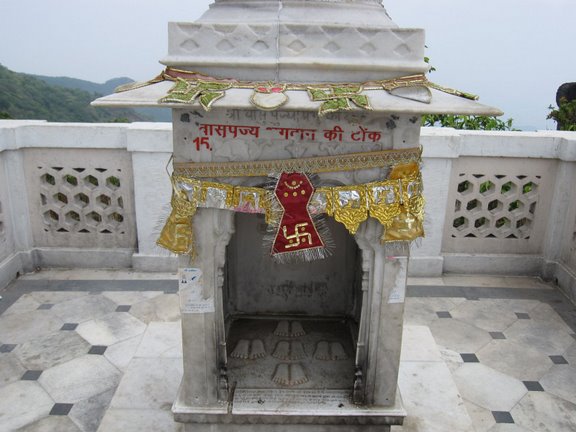
18. Shri Abhinandan Prabhu (4th Tirthankar)
Tonk No. 18 is of 4th Tirthankar Shri Abhinandan Prabhu. The Tonk is on a slight uphill walk from the Tonk No. 17. The charan replicas of Shri Abhinandan Prabhu, in black marble were dedicated here in Veer Samvat 2295. This Tonk is facing east.
During 2009, this Tonk was damaged in a lightening strike and was under re-dedication in 2009.
19. Shri Shubh Swami Ganadhara
Tonk No. 19 is of Ganadhara Shri Shubh Swami. The Tonk is decorated with two Dwarpals. The charan replicas of Shri Shubh Swami in black marble were dedicated here in Veer Samvat 2395-2403. This Tonk is directly opposite the Jal Mandir and faces west.
20. Jal Mandir
Jal Mandir is a majestic temple that is situatedon the southern side of the Parasnath Hills. It is an ornate temple compared to the Tonks. Built on a few acres of land, it consists of an elaborate temple hall with idols of Tirthanakars on all the four sides. It also consists of Moolnayak (principal deity) idol of Shamalia Parashavnath Bhagwan in the center and idols of Shri Sambhavmnath Prabhu on left and Abinandanth Prabhu on right.
The temple is also decorated on the outside with idols of Parashavnath Bhagwan. The entire temple body is surrounded by natural water bodies (Jalkunds) on three sides that is fed by a water spring, hence the name Jal Mandir. This temple does not consist of any Tirthankar charan replicas, however it is also referred as Tonk No. 20.
Jal Mandir as seen from the Front (opposite Tonk No. 19)
The dignified solemn idol of Lord Shamaliya Parshwanath, majestically installed in the temple as the principal deity of Jal Mandir
21. Shri Dharamnath Prabhu (15th Tirthankar)
Tonk No. 21 is of 15th Tirthankar Shri Dharamnath Prabhu. The charan replicas of Bhagwan are dedicated in black marble. This tonk faces south.
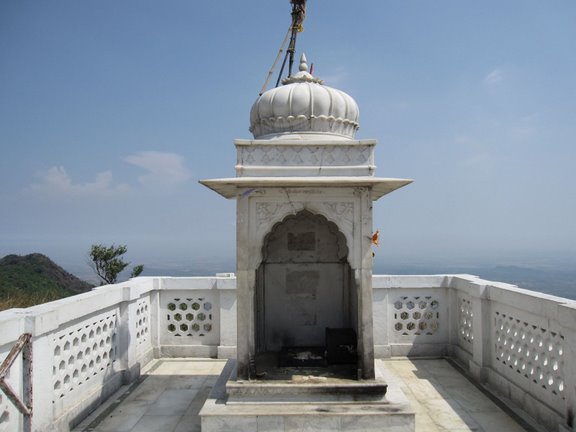
22. Shashvat Jin Shri Vardhman Prabhu
Tonk No. 22 is of Shashwat Jin Shri Vardhman Prabhu. It is on the right side of the trail when walking westwards. Relatively small charan replicas of Bhagwan in black marble were dedicated here in Veer Samvat 2395-2403. This Tonk is beautifully constructed with ornate style and architecture. The Tonk faces east.
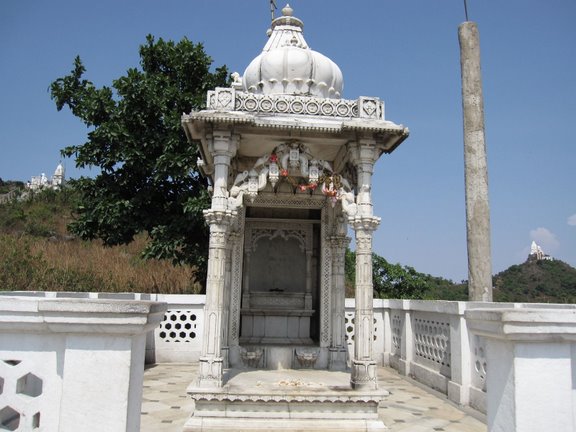
23. Shashvat Jin Shri Varishen Prabhu
Tonk No. 23 is of Shashvat Jin Shri Varishen Prabhu. It is on the left side of the trail when walking towards west. Charan replicas of Bhagwan Varishen in black marble and smaller size were dedicated here in Veer Samvat 2395-2403. This Tonk is also beautifully constructed with ornate style and architecture, similar to Tonk No. 22. The Tonk faces east.
24. Shri Sumatinath Prabhu (5th Tirthankar)
Tonk No. 24 is of 5th Tirthankar Shri Sumatinath Prabhu. Charan replicas of Bhagwan were dedicated here in black marble in Veer Samvat 2295. The Tonk faces east.
25. Shri Shantinath Prabhu (16th Tirthankar)
Tonk No. 25 is of 16th Tirthankar Shri Shantinath Prabhu. This Tonk is beautifully decorated with two Dwarpals outside the Tonk. Also, the dome is ornated with an image of the Bhagwan. Charan replicas of Bhagwan are dedicated in black marble. The Tonk faces east.
26. Shri Mahavir Prabhu (24th Tirthankar)
Tonk No. 26 is of 24th and last Tirthankar Shri Mahavir Prabhu. This Tonk is smaller and simplified built compared to the other Tonks. Charan replicas of Bhagwan Mahavir are dedicated in white marble and are smaller in size than other Tirthankars. Mahavir Swami did not attain nirvana at Shikharji. The Tonk faces east and is about 50 yards distant from the previous Tonk.
27. Shri Suparshavnath Prabhu (7th Tirthankar)
Tonk No. 27 is of 7th Tirthankar Shri Suparshavnath Prabhu. Charan replicas of Bhagwan Suparshavnath are dedicated here in black marble. This Tonk is also decorated with lion cubs looking images. The Tonk faces east and is about 500 m distant from the previous Tonk. From this Tonk one gets a fine view of the Tonks eastwards.
28. Shri Vimalnath Prabhu (13th Tirthankar)
Tonk No. 28 is of 13th Tirthankar Shri Vimalnath Prabhu. Charan replicas of Bhagwan are dedicated here in black marble. The Tonk faces east and is in the vicinity of the previous Tonk. A yatri gets very beautiful views of the south side of the Parasnath Hills.
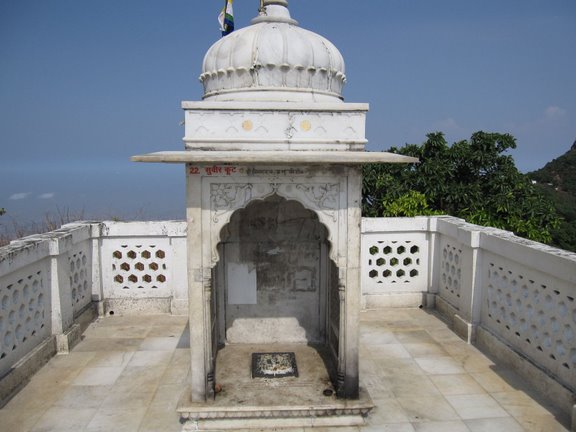
29. Shri Ajitnath Prabhu (2nd Tirthankar)
Tonk No. 29 is of 2nd Tirthankar Shri Ajitnath Prabhu. It is about 1 km walk on hilly terrain from the previous Tonk and is perched on a peak. The charan replicas of Bhagwan Ajitnath in white marble is dedicated here. The Tonk is facing north.
30. Shri Neminath Prabhu (22nd Tirthankar)
Tonk No. 30 is of 22nd Tirthankar Shri Neminath Prabhu and is situated very close to the previous Tonk. Shri Neminath Prabhu did not attain niravana here. A unique characteristic of this Tonk is that it has three pairs of charan replicas dedicated in white marble. The charan replicas are relatively smaller in size than other Tirthankars. The Tonk faces north side of the hills.
31. Shri Parshavnath Prabhu (23rd Tirthankar)
The last Tonk of Shikharji, Tonk No. 31, stands majestically on the west most and the highest peak of the Parasnath Hills. No other Jain temple is situated on a higher summit than this peak. This summit is therefore considered to be the highest summit of Jainism. The Tonk consists of a large temple with the charan replicas of Bhagwan Parshavnath in black marble. It also consists of the cave where Bhagwan Parasavnath meditated and perfomed Tapsya. Another pair of Charan replicas are installed here as well. Daily Puja is conducted here in the morning. The temple is facing east, however the charan replica inside the temple is facing north side of the mountains. Bhomayaji Bhagwan idol is present inside the temple.
The Tonk is at a approximate height of 4479 feet from the sea level. Its height is so much that sometimes the entire temple becomes covered in clouds. Therefore, it is also called Meghadambar Tonk (temple covered by clouds) in some Jain literature. The summit of the temple is visible even from a distance of 30 kms.
Clouds covering the Parashavnath Tonk
32. Impressions from Bhomyaji Temple (North of Shri Shikharji)
 Vivek Jain
Vivek Jain
